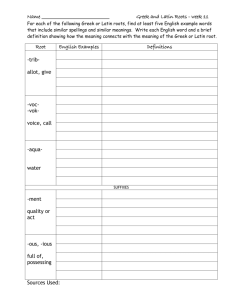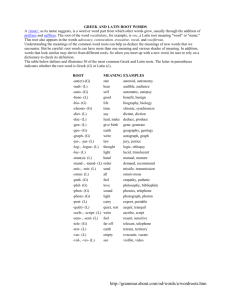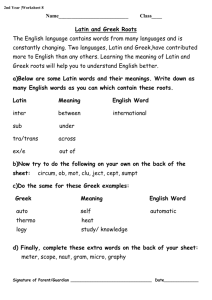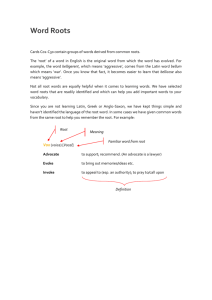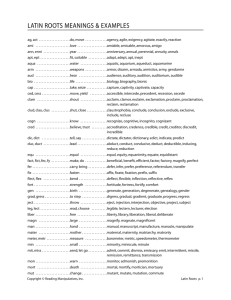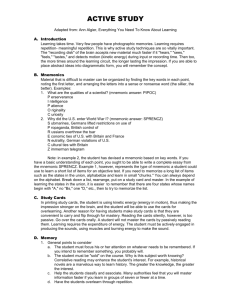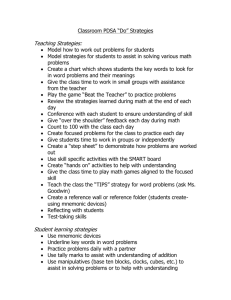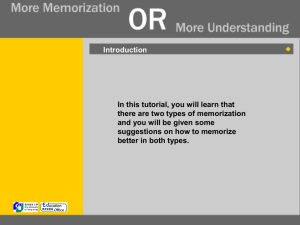Memorization Tips for Learning Pharmacy Drugs
advertisement
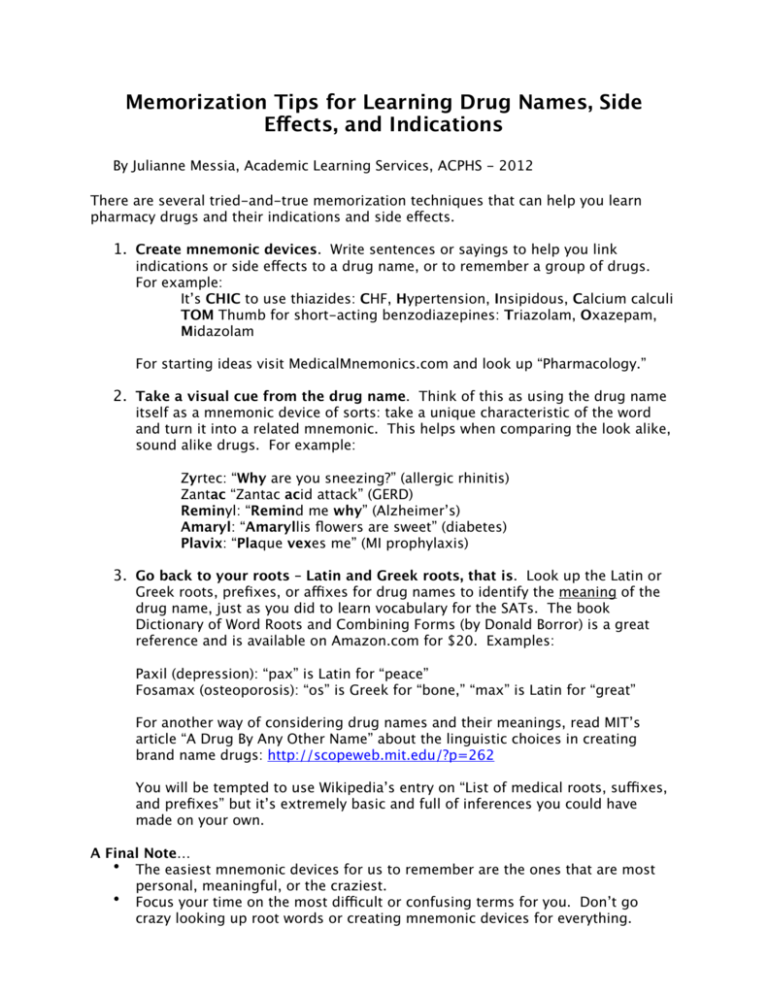
Memorization Tips for Learning Drug Names, Side Effects, and Indications By Julianne Messia, Academic Learning Services, ACPHS - 2012 There are several tried-and-true memorization techniques that can help you learn pharmacy drugs and their indications and side effects. 1. Create mnemonic devices. Write sentences or sayings to help you link indications or side effects to a drug name, or to remember a group of drugs. For example: It’s CHIC to use thiazides: CHF, Hypertension, Insipidous, Calcium calculi TOM Thumb for short-acting benzodiazepines: Triazolam, Oxazepam, Midazolam For starting ideas visit MedicalMnemonics.com and look up “Pharmacology.” 2. Take a visual cue from the drug name. Think of this as using the drug name itself as a mnemonic device of sorts: take a unique characteristic of the word and turn it into a related mnemonic. This helps when comparing the look alike, sound alike drugs. For example: Zyrtec: “Why are you sneezing?” (allergic rhinitis) Zantac “Zantac acid attack” (GERD) Reminyl: “Remind me why” (Alzheimer’s) Amaryl: “Amaryllis flowers are sweet” (diabetes) Plavix: “Plaque vexes me” (MI prophylaxis) 3. Go back to your roots – Latin and Greek roots, that is. Look up the Latin or Greek roots, prefixes, or affixes for drug names to identify the meaning of the drug name, just as you did to learn vocabulary for the SATs. The book Dictionary of Word Roots and Combining Forms (by Donald Borror) is a great reference and is available on Amazon.com for $20. Examples: Paxil (depression): “pax” is Latin for “peace” Fosamax (osteoporosis): “os” is Greek for “bone,” “max” is Latin for “great” For another way of considering drug names and their meanings, read MIT’s article “A Drug By Any Other Name” about the linguistic choices in creating brand name drugs: http://scopeweb.mit.edu/?p=262 You will be tempted to use Wikipedia’s entry on “List of medical roots, suffixes, and prefixes” but it’s extremely basic and full of inferences you could have made on your own. A Final Note… • The easiest mnemonic devices for us to remember are the ones that are most personal, meaningful, or the craziest. • Focus your time on the most difficult or confusing terms for you. Don’t go crazy looking up root words or creating mnemonic devices for everything.
